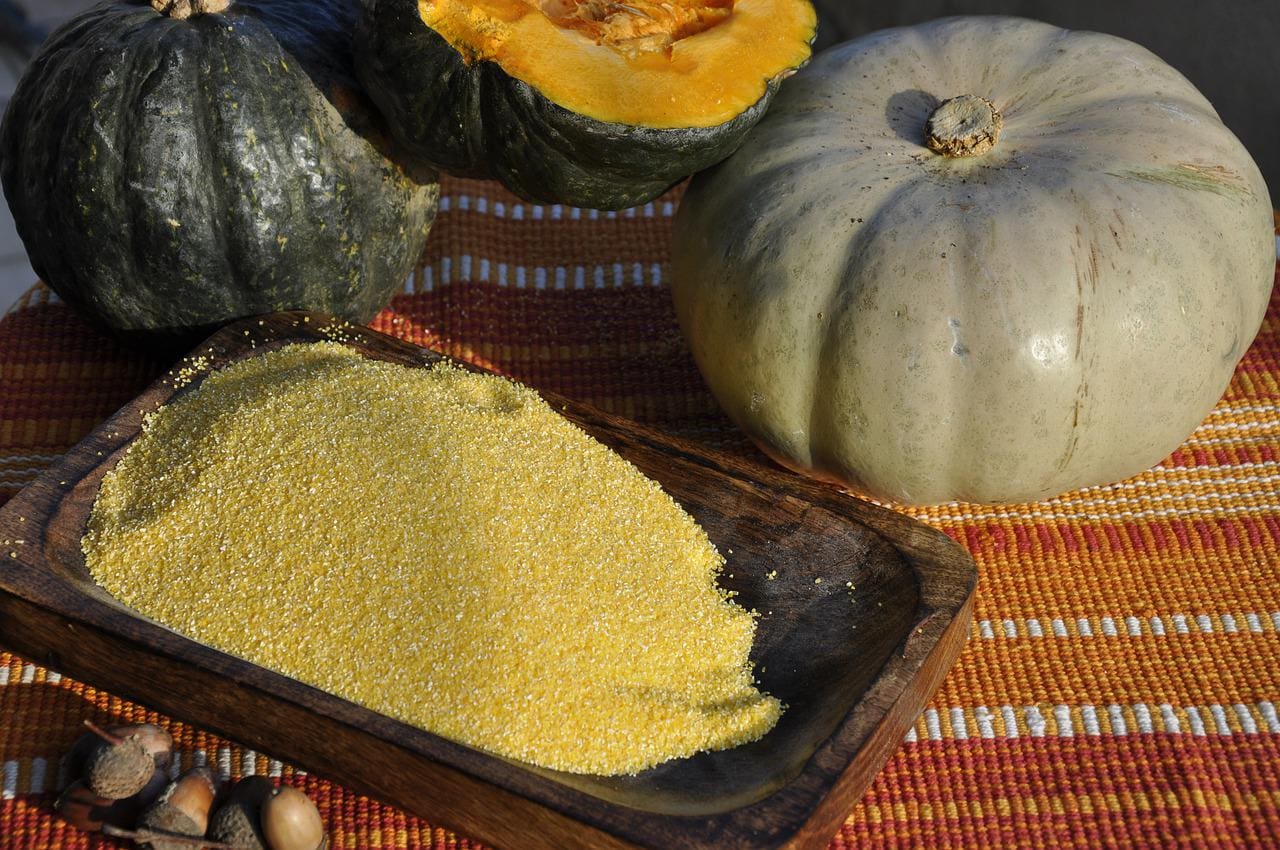Very finely ground cornmeals in Mexico are referred to as cornflour. Cornmeal is a meal ground from dried grains or maize.
It is a common staple food that is ground too obscene, medium, and light textures, but not as good as wheat flour.
Cornmeals are made out of different categories of sweet corn. There are four types of cornmeals in total, such as stone-ground, Yellow steel-ground, White, and Blue cornmeals.
They all are sugary, lush, and fragile. Their kernels have sugar and water at high levels.
Key Takeaways
- White Cornmeal is made from white corn and has a milder, sweeter taste, while Yellow Cornmeal is made from yellow corn and has a more robust, earthy flavor.
- White Cornmeal is finer and produces a smoother, creamier texture when cooked, while Yellow Cornmeal is coarser and grainier.
- White Cornmeal is used in recipes such as cakes, while Yellow Cornmeal is used for dishes such as cornbread or polenta.
White vs Yellow Cornmeal
The difference Between White and Yellow Cornmeal is their nutrients. The number of vitamins ‘A’ and ‘B’ and carotenoids are less in White corn than in Yellow. Also, yellow cornmeals are seel grounded, and whites are not.

Comparison Table
| Parameters of Comparison | White Cornmeal | Yellow Cornmeal |
|---|---|---|
| Kernels | Kernels of white corn are used for white cornmeal. | Kernels of yellow corn are used for yellow cornmeal. |
| Refining Process | It is more refined and cultivated cornmeal than yellow. | It is less refined and cultivated cornmeal than white. |
| Grounding | The white cornmeal is ground. | The yellow cornmeal is ground in steel. |
| Sugar Levels | It does not have much sugar in it | It has more sugar than that white cornmeal. |
| Flour | White corn flour is used in recipes with the need for no or less sugar. | Yellow corn flour is needed to be used in sweeter recipes. |
| Corn Meals | It is considered better for making Cornbreads | It is considered better for making pastries and cakes. |
| Vitamins A,’ ‘B,’ and Carotenoids | It involves less amount of carotenoids and vitamins A and B. | Many carotenoids, vitamins A and B, are involved in it. |
| Flavour | It has a less powerful and frail flavour than that yellow cornmeal. | It has a more potent flavour. |
| Most Consumed In | It is mostly consumed in Africa. Also, in some quantities in the southern United States, like for making its cornbreads. | It is mostly consumed in the United States. |
| Colour of the Corns | Creamy white coloured corns are grown. | Dark yellow coloured corns are grown. |
What is White Cornmeal?
White cornmeals are more found to be used in Africa. And also, a few quantities are used in the Southern United States. White corn is a sweet corn maize diversity.
Its hands are enfolding in the unyielding coating of subtle beryl green to white legumes.
At a particular distance, it can be contained up to 390 or 410 kernels in row sprouts, single-handedly by one corn. The milk and maize of white corn are creamy white-coloured.
Alternative names for these cornmeals in South Africa are Mielie Meal, Mielie Pap, or, shortly, Mielies.
When the Portuguese brought it from America, the words were derived from the Portuguese word ‘Milho’ into these African alternatives.
They are more refined and cultivated, solely grounded by stone or steel. Sugar levels are lower in its maize, so it is recommended to make cornbreads.
And it should be included in less sugary recipes for a delightful taste.
What is Yellow Cornmeal?
Yellow corn is another sweet corn variety. Its ears are wrapped in tightly bound lime-hued husks with silks and a tassel extending from the tip. Its yellowish kernels are packed in tight, almost uniform rows.
Its flavour is more sugary and a little like almonds. That is because it is more luscious in taste and is used for making cakes, pastries, and sweeter recipes. It is mostly found to be grown and used in the United States.
It contains more amount of carotenoids, which is what brings it its very own dark yellow colour. It also has more vitamin A and B levels than white cornmeal, making it more nutrient.
It is mostly ground in steel only. The essence is powerful as well as stronger than that of white.

Main Differences Between White and Yellow Cornmeal
- The former has white corn kernels, and the latter has yellow corn kernels.
- White cornmeals are refined and cultivated more than Yellow ones.
- Cornmeals that are white do not have sugar as high as the level it is in Yellow corn.
- The flour of the previous corn is used in the recipes that need less sweetness or not at all. Conversely, the succeeding flour is mixed in the recipes that need sugar.
- The first one makes cornbreads better. At the same time, the second is for pastries or cakes.
- The number of vitamins such as A, B, and carotenoids is more in the yellow cornmeal than in the white meal.
- Yellow cornmeals have a more powerful as well as potent flavour than White.
- The African region mostly consumes white cornmeal. On the other hand, Yellow cornmeals are consumed more by the United States region.
- The former has corn and follows its cornmeals in creamy white colour. Whereas the latter has dark yellow to its corns and meals.
- The prior is grounded, whereas the subsequent is grounded in steel.

- https://pubs.acs.org/doi/pdf/10.1021/jf00034a026
- https://www.sciencedirect.com/science/article/pii/S0889157508001336
- https://apps.who.int/iris/bitstream/handle/10665/251902/9789241549936-eng.pdf
This article has been written by: Supriya Kandekar



